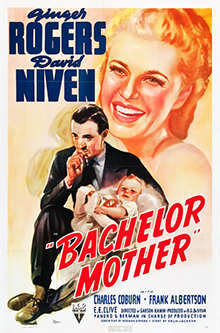
Bachelor Mother (1939) is an American romantic comedy film directed by Garson Kanin, and starring Ginger Rogers, David Niven, and Charles Coburn. The screenplay was written by Norman Krasna from an Academy Award-nominated story by Felix Jackson written for the 1935 Austrian-Hungarian film Little Mother. With a plot full of mistaken identities, Bachelor Mother is a light-hearted treatment of the otherwise serious issues of child abandonment.
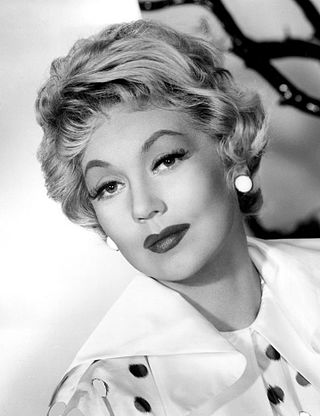
Ann Sothern was an American actress who worked on stage, radio, film, and television, in a career that spanned nearly six decades. Sothern began her career in the late 1920s in bit parts in films. In 1930, she made her Broadway stage debut and soon worked her way up to starring roles. In 1939, MGM cast her as Maisie Ravier, a brash yet lovable Brooklyn showgirl. The character proved to be popular and spawned a successful film series and a network radio series.
Nell Columbia Boyer Martin (1890–1961), usually known as Nell Martin and also published under the name Columbia Boyer, was an American author from Illinois specializing in light-hearted mysteries and short stories.

The Road to Ruin is a 1934 pre-Code exploitation film directed by Dorothy Davenport, under the name "Mrs. Wallace Reid", and Melville Shyer, and written by Davenport with the uncredited contribution of the film's producer, Willis Kent. The film, now in the public domain, portrays a young woman whose life is ruined by sex and drugs.
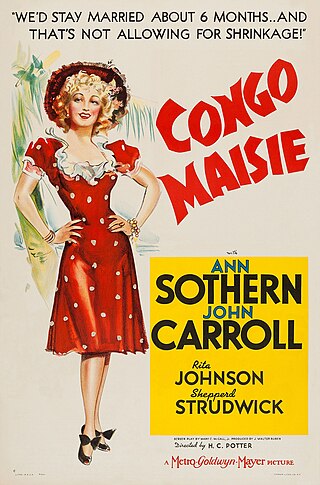
Maisie Ravier is a fictional character, best known as the leading character of ten American films (1939–1947), the Maisie films, and the radio show The Adventures of Maisie. In these, she was played by actress Ann Sothern.

The Ann Sothern Show is an American sitcom starring Ann Sothern that aired on CBS for three seasons from October 6, 1958, to March 30, 1961. Created by Bob Schiller and Bob Weiskopf, the series was the second starring vehicle for Sothern, who had previously starred in Private Secretary, which also aired on CBS from 1953 to 1957.
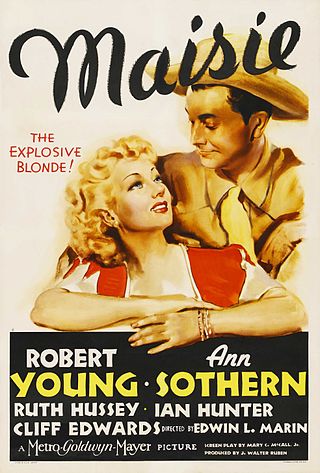
Maisie is a 1939 American comedy film directed by Edwin L. Marin based on the 1935 novel Dark Dame by Wilson Collison. The rights to the novel were originally purchased by MGM for a Jean Harlow film, but Harlow died in 1937 before a shooting script could be completed. The project was put on hold until 1939, when Ann Sothern was hired to star in the film with Robert Young as leading man.

Shadow on the Wall is a 1950 American psychological thriller film directed by Patrick Jackson and starring Ann Sothern, Zachary Scott and Gigi Perreau and featuring Nancy Davis. It is based on the 1943 story Death in the Doll's House by Hannah Lees and Lawrence P. Bachmann.
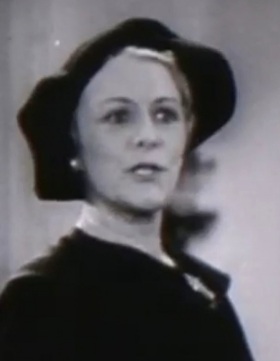
Nella Walker was an American actress and vaudeville performer of the 1920s through the 1950s.
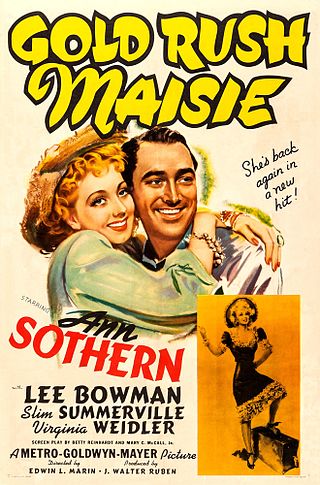
Gold Rush Maisie is a 1940 drama film, the third of ten films starring Ann Sothern as Maisie Ravier, a showgirl with a heart of gold. In this entry in the series, she joins a gold rush to a ghost town. The film was directed by Edwin L. Marin.

Congo Maisie is a 1940 comedy-drama film directed by H. C. Potter and starring Ann Sothern for the second time in the ten film Maisie series as showgirl Maisie Ravier.

Wilson Collison was a writer and playwright.

Maisie Was a Lady is a 1941 American comedy drama film directed by Edwin L. Marin and starring Ann Sothern, Lew Ayres and Maureen O'Sullivan. Produced and distributed by Metro-Goldwyn-Mayer, it is the fourth in a series of ten films starring Sothern as good-hearted showgirl Maisie Ravier.
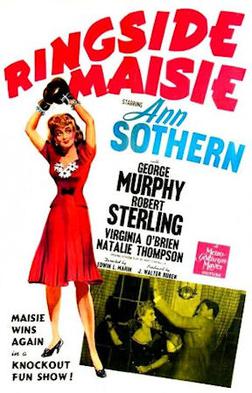
Ringside Maisie is a 1941 American sports comedy film directed by Edwin L. Marin and starring Ann Sothern, Robert Sterling and George Murphy. It is the fifth of ten pictures in the Maisie series. This was Sothern and future husband Sterling's only film together.
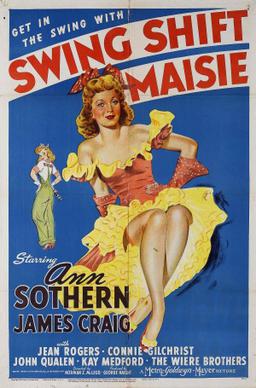
Swing Shift Maisie is a 1943 romantic comedy film directed by Norman Z. McLeod. It is the seventh in a series of 10 films starring Ann Sothern as Maisie, preceded by Maisie Gets Her Man (1942) and followed by Maisie Goes to Reno (1944). Her co-stars are James Craig and Jean Rogers.
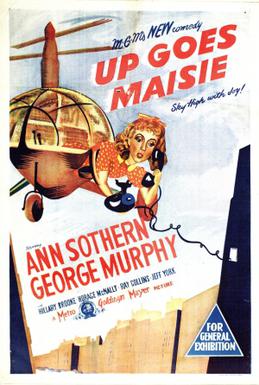
Up Goes Maisie is a 1946 American comedy film directed by Harry Beaumont. Produced by Metro-Goldwyn-Mayer, it is the ninth of 10 films starring Ann Sothern as ex-showgirl Maisie Ravier, characterized as "that double trouble doll with the sassy chassis". In this series entry, Maisie, "the peppery lady with a golden heart" goes to work for an inventor and helicopter operator played by George Murphy.

Maisie Goes to Reno is a 1944 American comedy film directed by Harry Beaumont. It is the eighth film starring Ann Sothern as Maisie Ravier, preceded by Swing Shift Maisie and followed by Up Goes Maisie. John Hodiak plays her love interest in this 1944 romantic comedy.

Fifty Roads to Town is a 1937 American romantic comedy film directed by Norman Taurog and starring Don Ameche and Ann Sothern. The film is based on a book of the same name by author Frederick Nebel. This is the third novel Nebel wrote.

Hotel for Women is a 1939 American drama film directed by Gregory Ratoff and starring Ann Sothern, Linda Darnell, and James Ellison. It was Darnell's screen debut. As work published in 1939, it will enter the American public domain in 2035 following its renewal in 1967.

Chicago Syndicate is a 1955 American film noir crime film directed by Fred F. Sears and starring Dennis O'Keefe and Abbe Lane.



















